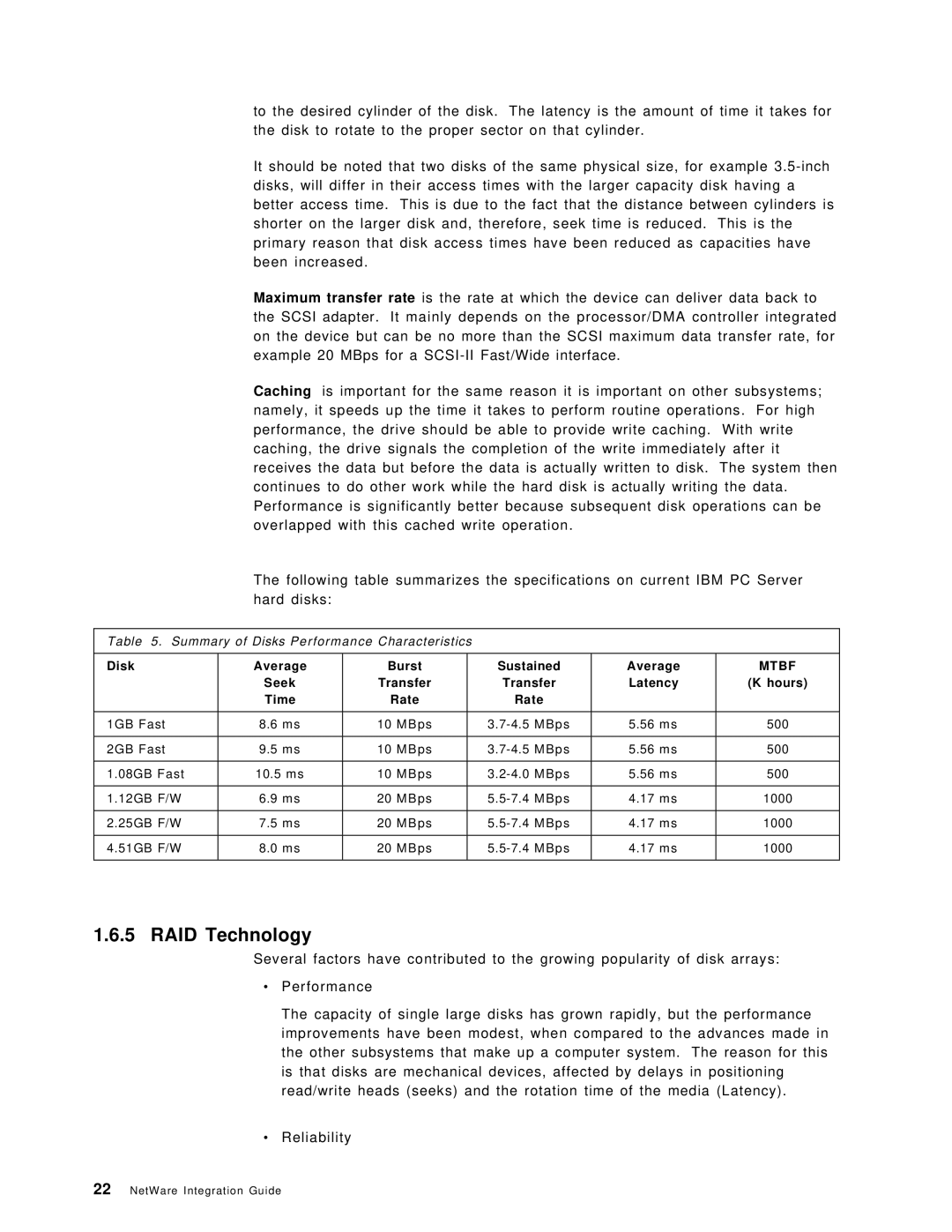
to the desired cylinder of the disk. The latency is the amount of time it takes for the disk to rotate to the proper sector on that cylinder.
It should be noted that two disks of the same physical size, for example
Maximum transfer rate is the rate at which the device can deliver data back to the SCSI adapter. It mainly depends on the processor/DMA controller integrated on the device but can be no more than the SCSI maximum data transfer rate, for example 20 MBps for a
Caching is important for the same reason it is important on other subsystems; namely, it speeds up the time it takes to perform routine operations. For high performance, the drive should be able to provide write caching. With write caching, the drive signals the completion of the write immediately after it receives the data but before the data is actually written to disk. The system then continues to do other work while the hard disk is actually writing the data. Performance is significantly better because subsequent disk operations can be overlapped with this cached write operation.
The following table summarizes the specifications on current IBM PC Server hard disks:
Table 5. Summary of Disks Performance Characteristics
Disk | Average | Burst | Sustained | Average | MTBF |
| Seek | Transfer | Transfer | Latency | (K hours) |
| Time | Rate | Rate |
|
|
|
|
|
|
|
|
1GB Fast | 8.6 ms | 10 MBps | 5.56 ms | 500 | |
|
|
|
|
|
|
2GB Fast | 9.5 ms | 10 MBps | 5.56 ms | 500 | |
|
|
|
|
|
|
1.08GB Fast | 10.5 ms | 10 MBps | 5.56 ms | 500 | |
|
|
|
|
|
|
1.12GB F/W | 6.9 ms | 20 MBps | 4.17 ms | 1000 | |
|
|
|
|
|
|
2.25GB F/W | 7.5 ms | 20 MBps | 4.17 ms | 1000 | |
|
|
|
|
|
|
4.51GB F/W | 8.0 ms | 20 MBps | 4.17 ms | 1000 | |
|
|
|
|
|
|
1.6.5 RAID Technology
Several factors have contributed to the growing popularity of disk arrays:
∙Performance
The capacity of single large disks has grown rapidly, but the performance improvements have been modest, when compared to the advances made in the other subsystems that make up a computer system. The reason for this is that disks are mechanical devices, affected by delays in positioning read/write heads (seeks) and the rotation time of the media (Latency).
∙Reliability
22NetWare Integration Guide
